Huang Qingjun “Family Stuff” 13.09 – 02.11.2014
September 13, 2014 12:00 am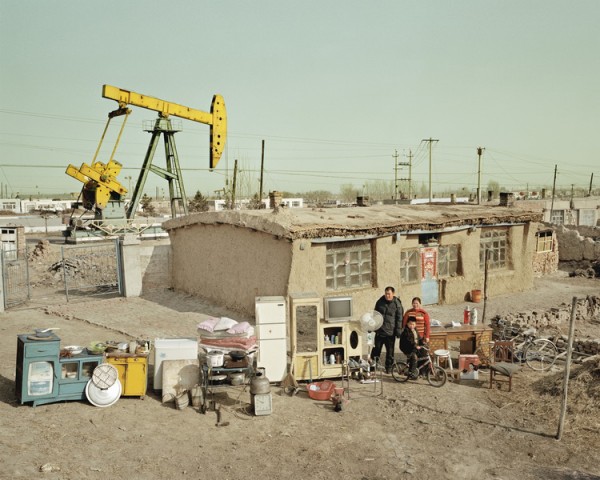 |
||
|
From September 13th through November 2nd 2014, Anthropologists in Art are proud to present: “Family Stuff”
|
||
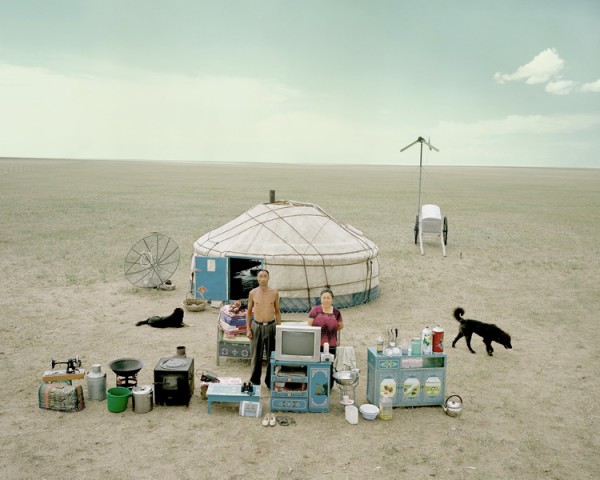 |
||
| Huang’s series ‘Jiadang’, or ‘Family Stuff’, has at its core a premise that seems alluringly simple; he asks families to gather all their earthly possessions and display them in front of their homes. He then photographs them in the midst of all their ‘family stuff’. Starting in 2003 when Huang was commissioned by National Geographic to take pictures of Chinese families’ material goods in Inner Mongolia and three Eastern provinces, Huang continued travelling around China for over a decade recording people’s material wealth and /or paucity. Huang’s praxis of asking people to pose among their worldly goods does seem temptingly simple, yet it belies the density of the series’ deductive implications for the viewer, not to mention the difficulty of explaining the purpose of his project to his subjects – some of whom had never been photographed before. | Huang’s serie ‘Jiadang’, of ‘Family Stuff’, lijkt een eenvoudig uitgangspunt te hebben: hij vraagt families al hun bezittingen te verzamelen en voor hun huis uit te stallen. Vervolgens fotografeert hij deze families temidden van al hun persoonlijke bezittingen. Toen National Georgraphic Huang in 2003 opdracht gaf om een fotoreportage te maken van het materiële hebben en houden van Chinese families in Binnen-Mongolië en drie oostelijke provincies, werd al snel duidelijk dat hij het niet bij een eenmalig project wenste te houden. Inmiddels fotografeert hij al meer dan 10 jaar de materiële rijkdom – of het gebrek daaraan – van Chinese families die hij tijdens zijn rondreizen tegenkomt. Huang’s werkwijze lijkt betrekkelijk eenvoudig te zijn, maar de interpretatie van zijn werk bevat een rijkdom aan gelaagdheid. | |
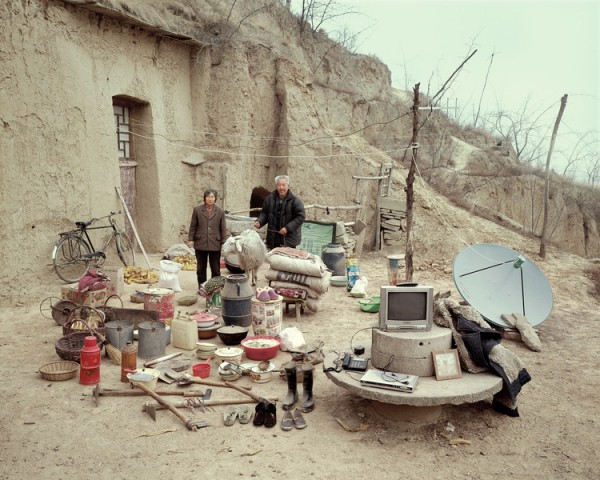 |
||
| Aside from the individual quality of the photographs themselves, viewing them as a series is a fascinating experience. The sheer variety of subject matter depicted – the surroundings, architecture, ethnicities, domiciles, families and finally, the amount and quality of their possessions – forces the viewer to gain a new appreciation for the oft-overlooked diversity of Chinese society. Moreover, Huang’s series appeals directly to our inherent voyeurism. Our desire to look at other people’s stuff is intoxicating, especially when they aren’t watching us. In this case we may do so unashamedly. Furthermore, Huang’s ‘Family Stuff’ demonstrates a rare sensibility of his examination into China’s recent headlong dash into unbridled consumerism. | Naast de individuele kwaliteit van de foto’s zelf, is het bekijken van de beelden als reeks een fascinerende ervaring. De foto’s herbergen in zich een enorme verscheidenheid aan onderwerpen; de omgeving, de architectuur, etniciteit, huisvesting, families en ten slotte hun bezittingen. Zij dwingen de kijker een rijker beeld te vormen met betrekking tot de enorme diversiteit van de Chinese samenleving. Bovendien appelleert Huang’s serie rechtstreeks aan ons voyeuristische inslag. Ons verlangen om (onopgemerkt) te snuffelen door andermans spullen is onweerstaanbaar. Met de serie van Huang kunnen wij aan deze neiging ongestraft toegeven. | |
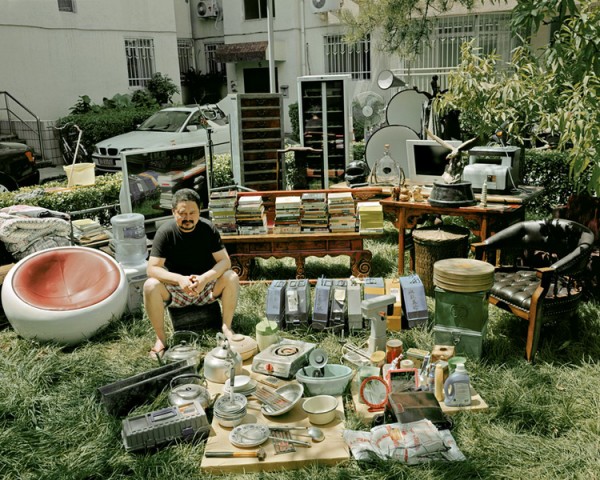 |
||
| In the 1950’s, ‘The Big Four’ was a phrase specifying the most sought-after goods of recently married couples. These comprised a sewing machine, a bicycle, a watch and a radio. By the 1980’s, the ‘Big Four’ included a TV, a washing machine, a rice cooker and a fridge. Nowadays, with the flooding of the Chinese market with all manner of luxury goods, it has come to denote the latest trends in consumer fashions, ranging from Mercedes Benzes and BMWs to the latest smartphones and stereo-surround systems. Through the focus on Chinese families’ contemporary material culture, one can glean an understanding of the changing values, beliefs, attitudes and ideas that underlie Chinese society today. In that sense, ‘Family Stuff’ not only captures a mesmerising record of contemporary Chinese families’ material wealth, it also hints at Chinese society’s aspirations and ambitions in terms of its future.
‘Family Stuff’ will be the first exhibition of Huang Qingjun in The Netherlands. |
In de jaren ‘50, was ‘De Grote Vier’ een term die gebruikt werd om de vier meest gewilde artikelen van onlangs gehuwde stelletjes te duiden. Deze bestonden uit een naaimachine, een fiets, een horloge en een radio. Tegen de jaren ’80 maakten deze plaats voor een televisie, een wasmachine, een rijstkoker en een koelkast. Met de huidige overvloed aan (luxe) artikelen op de Chinese markt, is de invulling van ‘De Grote Vier’ continu aan verandering onderhevig.
Door Huang’s focus op de materiële cultuur van Chinese families, kan de kijker een idee ontwikkelen van de veranderende waarden, overtuigingen en attitudes die ten grondslag liggen aan de hedendaagse Chinese samenleving. In die zin geeft ‘Family Stuff’ niet alleen een fascinerend beeld van de materiële rijkdom van Chinese families vandaag de dag, het zinspeelt ook op de aspiraties in de Chinese samenleving met betrekking tot de toekomst. ‘Family Stuff’ is de eerste tentoonstelling van Huang Qingjun in Nederland. |
|
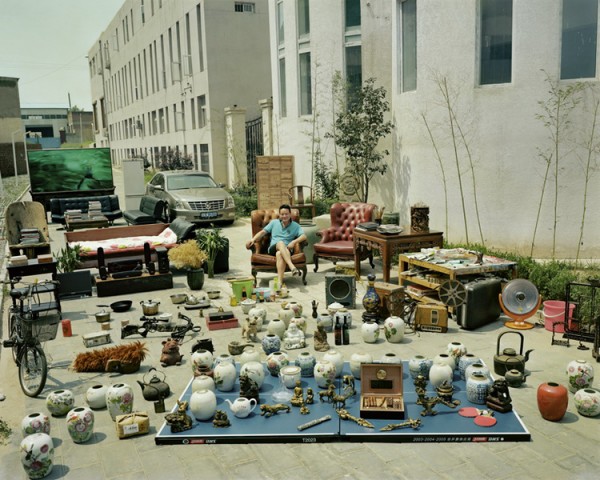 |
||
Tags: Huang Qingjun
